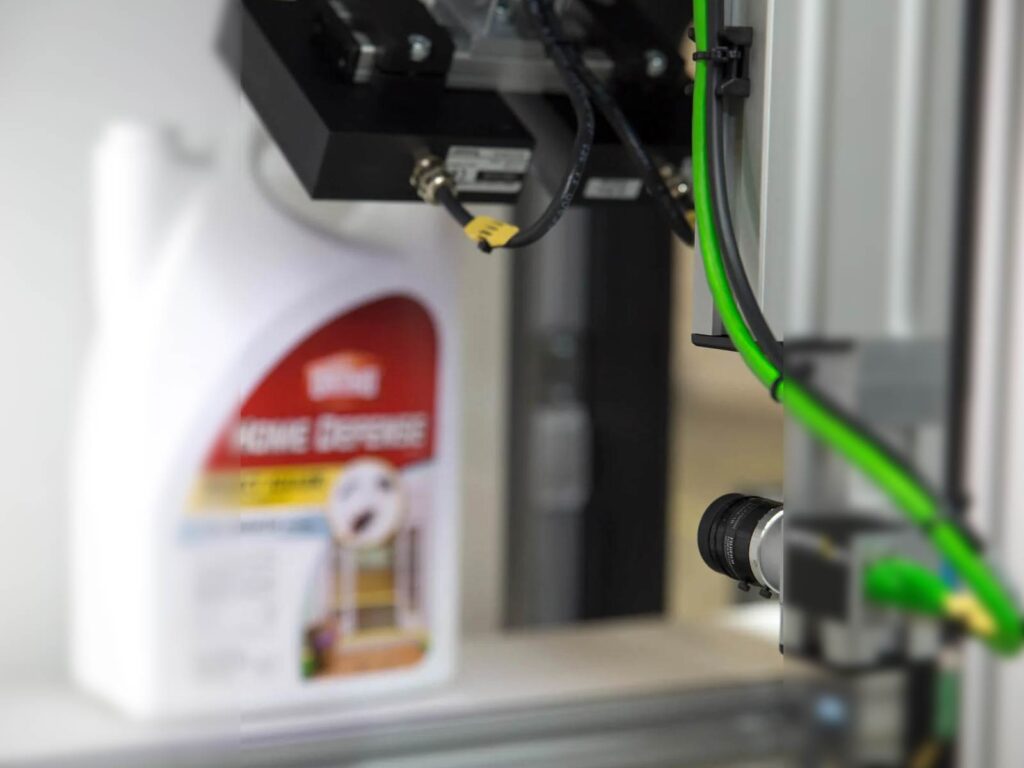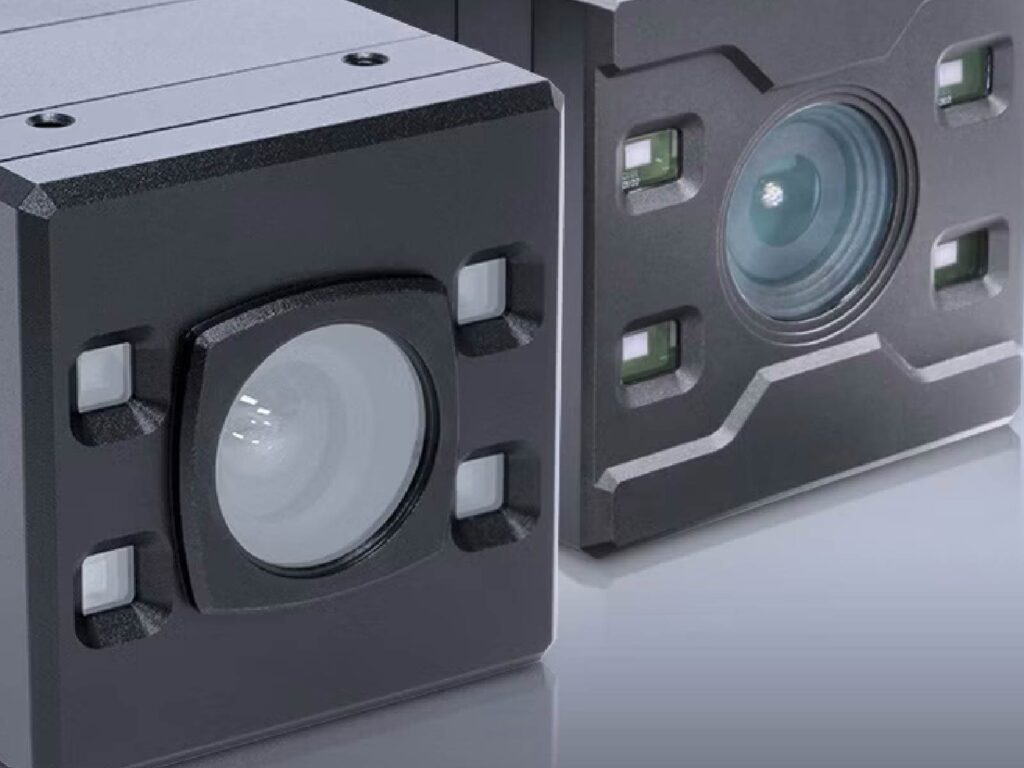Enter your details below to download the product catalogue.

A Comprehensive Guide to IR Lenses: SWIR, LWIR, and Their Role in Imaging Infrared (IR) imaging has become a crucial technology in various industries, from security and defence to industrial inspection and scientific research. Unlike visible light imaging, IR cameras rely on capturing infrared radiation emitted or reflected by objects. However, to achieve clear and precise imaging, specialized IR lenses are essential. Choosing the right IR lens depends on multiple factors, including the wavelength range, focal length, and intended application. This article explores different types of IR lenses—particularly Shortwave Infrared (SWIR) and Longwave Infrared (LWIR) lenses—their applications, the importance of Detection, Recognition, and Identification (DRI), and the differences between fixed focal, varifocal, and zoom lenses. Understanding the Infrared Spectrum and IR Lenses Infrared light is a segment of the electromagnetic spectrum that extends beyond visible light. It is generally categorized into: Near-Infrared (NIR): 0.7 µm – 1.0 µm Shortwave Infrared (SWIR): 0.9 µm – 1.7 µm Midwave Infrared (MWIR): 3 µm – 5 µm Longwave Infrared (LWIR): 8 µm – 14 µm Each range serves different applications, with SWIR and LWIR being particularly important for imaging and thermal detection. Why…

The Role of Polarization Imaging in Machine Vision [2025] In the world of machine vision, the demand for higher image clarity and more accurate defect detection is constantly growing. Industries rely on advanced imaging technologies to inspect products, detect flaws, and ensure quality control. One such innovation is polarization imaging, which has gained significant traction in recent years. By integrating the power of light polarization into machine vision systems, companies are able to see beyond the capabilities of traditional cameras. In this article, we will explore the role of polarization imaging in machine vision, its benefits, and how it is transforming industries in 2025. What is Polarization Imaging? To understand polarization imaging, we first need to grasp the concept of polarization in light. Polarization refers to the direction in which light waves oscillate. Most light from natural sources (like the sun) is unpolarized, meaning the light waves oscillate in all directions. However, when light interacts with surfaces or materials, some of it becomes polarized, causing the oscillations to align in a specific direction. Polarization imaging involves capturing these changes in light’s polarization to reveal valuable information that might be hidden…

Weld Quality Inspection: The Role of Machine Vision in 2025 What does it take to create a world-class manufacturing experience? Is it the safety of welded joints? Compliance? Structural integrity? The answer is simple. A bit of everything! As days go by, advanced tech integration is becoming imperative to quality manufacturing. And that’s where weld quality inspection comes in. With machine vision in the picture, the industry is set to reimagine precision and efficiency like never before. This article discusses the pivotal role of weld quality inspection, the benefits of machine vision in welding, the role of weld monitoring cameras, industry applications, and future trends. Keep scrolling! Why Weld Quality Inspection Is Important? From construction to aerospace, welded joints are integral to every industry to keep it safe and avoid financial losses and machine failures. Now, traditional inspection methods aren’t much help here as visual assessments and manual measurements are time-consuming. Being a human-driven process, they are also prone to errors. So, automated weld quality inspections are the need of the hour. However, optimum weld quality isn’t just limited to post-weld inspection. Real-time weld monitoring is also a crucial aspect…

Time of Flight 3D Camera: What You Need to Know Time of Flight (ToF) technology has transformed depth sensing and 3D imaging by offering a fast, precise, and dependable method for measuring distances. ToF 3D cameras, which rely on this technology, are making significant contributions to 3D machine vision. They are driving advancements in areas like robotics, industrial automation, and consumer electronics. From robotic pick-and-place systems to autonomous navigation, these cameras have become essential in modern industries. What is a Time of Flight 3D Camera? A Time of Flight (ToF) 3D camera determines depth by calculating the time light takes to travel to an object and back—this is the core principle of Time of Flight. These cameras typically feature an infrared light source , a sensor to detect the returning light, and processors that convert the data into a 3D depth map or point cloud. Comparison with Other 3D Imaging Methods Stereo 3D This method utilizes two cameras positioned at slightly different angles to mimic human binocular vision, enabling depth calculation through the process of triangulation. While effective for capturing depth information, it requires precise alignment and intricate calibration to…

Exploring SWIR Cameras: A Detailed Walkthrough of Atlas and Triton Series For decades, visible-range cameras have helped us uncover deep insights while imaging objects across industries and applications. But they have limitations. A few among them being poor vision under hazy or smoky conditions, limited penetration through opaque materials, and false colour interpretations. These limitations have sparked the fast-paced transition towards Short-Wave Infrared (SWIR) imaging over the last few decades. SWIR cameras use a special type of sensor that can detect light invisible to the human eye, thereby unlocking a whole new world of possibilities across industries. Overlapping the visible and near-infrared regions of the electromagnetic spectrum, its wavelength band extends from 900 to 2500 nm. SWIR offers enhanced visibility under challenging environments, penetrates silicon, plastic and other opaque materials with ease, and has the ability to differentiate between materials for precise identification and sorting. In short, SWIR cameras address all the inherent shortcomings of conventional visible-range cameras and have broadened the horizons of imaging across industries. Key Applications of SWIR Vision Systems Fruit & Food inspection: SWIR is sensitive to water and can be used to examine moisture content…

The Ultimate Guide on Short Wave Infrared (SWIR) While the human eye is an extraordinary creation that can perceive a vast spectrum of colors, there lies a wide spectrum of light beyond the visible range, waiting to be explored. The Infrared (IR) radiation extends beyond the visible spectrum of light (400 – 700 nm) and has a wavelength ranging from 700 – 1,000,000 nanometers (nm). This spectrum consists of four distinct wavebands such as the Near Infrared (NIR), Mid-Wave Infrared (MWIR), Short-Wave Infrared (SWIR), and Long-Wave Infrared (LWIR). While the NIR range is used for medical imaging and food inspection, LWIR finds its applications in thermal imaging and night vision. SWIR imaging falls between NIR and LWIR, and it is typically used for high-resolution imaging in the visible and infrared spectrum. In this blog, we would be specifically examining SWIR in detail including its properties, benefits and what possibilities that lie ahead. What is Short Wave Infrared or SWIR imaging? SWIR is the short wavelength portion of the infrared spectrum and occupies the segment between the visible and mid-infrared wavelengths. It cannot be seen by the human eye or detected…

The Infinite Possibilities of Non Visible Imaging & How to Embrace It Machine vision and image processing systems have been able to achieve breakthroughs across industries by measuring or inspecting complex objects of varied shapes, sizes and materials.However, a vast majority of these systems have been traditionally designed to operate in the visible light range of the electromagnetic spectrum. This is the range of light that the human eye can detect and have wavelengths ranging from 400 – 700 nanometers (nm). But, that is just the tip of the iceberg! With the applications of machine vision going full steam in the visible range, tech enthusiasts are now exploring frontiers beyond the visible spectrum. Adding to the shift, technology advancements in vision systems have also evolved beyond the visible range and are now delivering the same precision across spectrums outside the visible range. Let’s dive into the slew of applications of non-visible imaging and the prerequisites to extract the best results. Non Visible Imaging Radiations: Infrared, Thermal and Ultraviolet The electromagnetic (EM) spectrum consists of the entire range of electromagnetic radiations with varying frequencies, wavelengths and photon energies. Considering wavelength, the…

The Changing Face of Quality Control in India Powered by Machine Vision In today’s highly competitive, fast-paced and customer-centric world, ensuring superior quality standards is a prerequisite for industries across the spectrum. The pressure to stay ahead of the market and attain customer delight is driving companies to optimise operations, lower costs and increase efficiencies like never before. This has led to a paradigm shift in quality control in India. The Government of India is introducing compulsory quality standards that are more stringent yet practical across retail, FMCG, manufacturing and more. This will help the country withstand fierce competition, scale production and become more competitive. At the forefront of this revolutionary change is machine vision, which enables inspection automation for consistent and accurate results. What is Quality Control? Quality control is a comprehensive approach followed across the entire production or delivery process to ensure that specific quality standards and specifications are met. It involves: Meticulously checking the products delivered for defects or inconsistencies Monitoring the production processes to ensure consistency and adherence to established procedures Adopting corrective actions in the event of defects by reworking the production process, fine-tuning the…

5 Compelling Machine Vision Applications for a Sustainable India Sustainability has emerged as the need of the hour for countries across the globe. The Paris Agreement signed by 196 Parties, including India, aspires to limit global warming to below 1.5 degree celsius and attain net zero carbon emissions by 2050. This calls for countries world-over to pivot their development strategies towards smart sustainability. Machine vision, a subfield of computer vision, can help various sectors including agriculture, energy, transportation, waste management, environment and more, in this transformative journey by delivering smart solutions to sustainability issues. What is Machine Vision? Machine vision technology equips machines with “sight”. The set-up includes lighting, cameras with sensors, processors, and communication systems. Lighting illuminates the environment or object of focus, the lens and sensor within the camera captures images of the object and converts them into a digital format, and the processor extracts meaningful insights from the digital data through its built-in software and machine vision algorithms. Based on the data gathered by the processor, the system communicates with other machines, robots or software through output channels. Machine Vision System Applications in the Real World Smart…